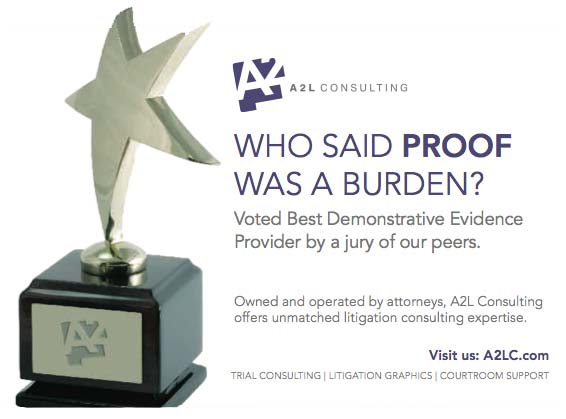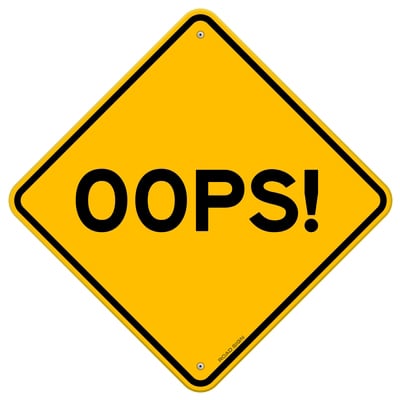by Ken Lopez
Founder & CEO
A2L Consulting
Just because you use trial graphics at trial does not mean you increase your chances of winning at trial. In fact, when you choose to use trial graphics, many risks are introduced. Used the wrong way, trial graphics, litigation graphics and demonstrative evidence can do more harm than good.
Accordingly, I think it is critical for a lawyer to carefully manage these risks. The good news is that all of these risks can be easily mitigated. And, used properly, the benefits of using trial graphics far outweigh potential risks.
Here are five problems that commonly arise when trial graphics are used and some strategies for reducing your risk to near zero.
- Technology failures: Quite a bit can go wrong with technology in the courtroom. This includes not getting permission to use it in the first place, projector bulbs dying with no replacement, projectors that barely work, videos that are difficult for counsel to run, printed trial boards that are not sized properly for the room and much more. To manage these we certainly recommend the use of the highly experienced trial technician. Here are some resources that will help you manage the risk of a technology failure.
- Free guidebook for hiring the best trial technician
- Overview of our courtroom technology services
- Using TrialDirector in the courtroom
- Reading bullet points: We have written about this topic before. For a variety of valid scientific reasons, if you read your slides or read your bullet points, you are doing more harm than good. It’s one of the most common mistakes presenters make. Here are some articles that explain this in more detail.
- You decide to make your own slides: You're smart. You own the latest copy of Powerpoint. You know enough to not use spinning entrance animations and the applause sound effect. So, why can't you just start making slides? Well you can – but – when you do this you’re not efficiently using your client’s money (our billable rate is much lower than yours) and as we described in a previous article, you’re probably not going to come up with the best graphic for the task time after time. Remember we do this everyday of the year, sometimes consulting on hundreds of cases in single year.
- You build your trial story and outline in Powerpoint. Quite a few litigators write their outlines in Powerpoint, and I don't think it is an ideal approach. Often, they will start writing out slide after slide of the points they want to make, then they hand that to us and say, make these look good. This is not a good approach. First, your billable hour is higher than ours, and you should be working in Word for efficiency. Second, handing us a series of slides deprives us both of the chance to improve the story together. Third, there are other more beneficial methods to developing your outline. Here are some helpful articles that touch on these points:
- 5 keys to telling a compelling story in the courtroom
- Working together means a better and simpler output
- 7 ways to draft a better opening statement
- The wrong points are emphasized: I like to say that the documents at trial are the words in a sentence, the electronic trial graphics are the periods and the printed trial graphics or highly thematic electronic exhibits are the exclamation points. For this last category, the key is to make sure you are not emphasizing the wrong thing. The best way to do that is to test the case with mock jurors or a mock judge panel. If that cannot happen because of budget (time is rarely a good excuse), then at least work with your litigation consultant to get some commonsense responses to the material. Here are some related articles:
Most litigators use Powerpoint to display trial graphics at trial. However, in the wrong hands, Powerpoint can be a dangerous tool. Sometimes, it gives the illusion of adding value when it is actually doing damage.
Powerpoint doesn’t ruin a presentation’s impact, people do.







Leave a Comment